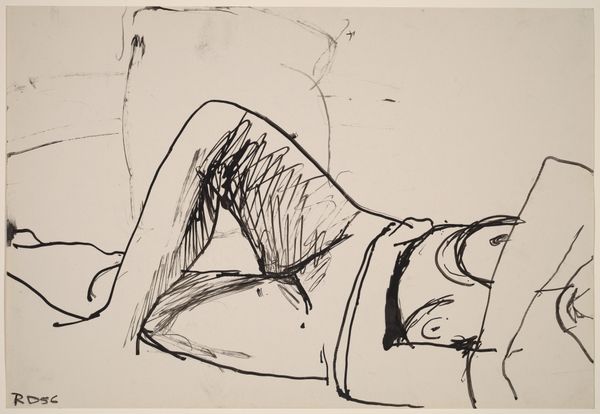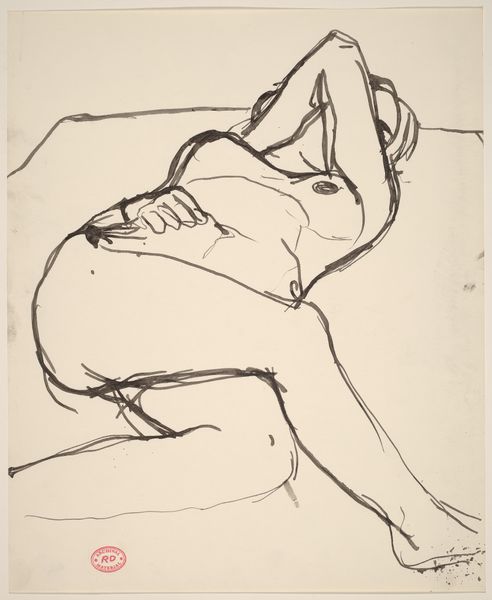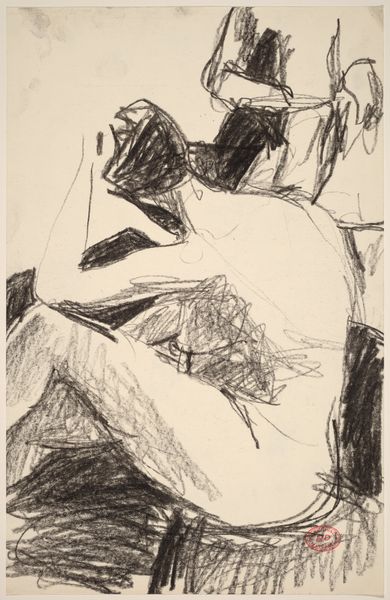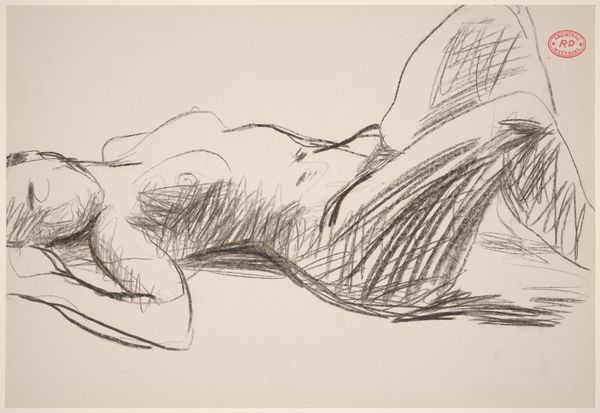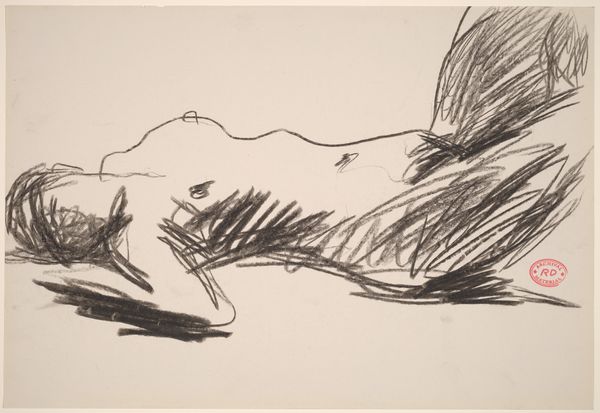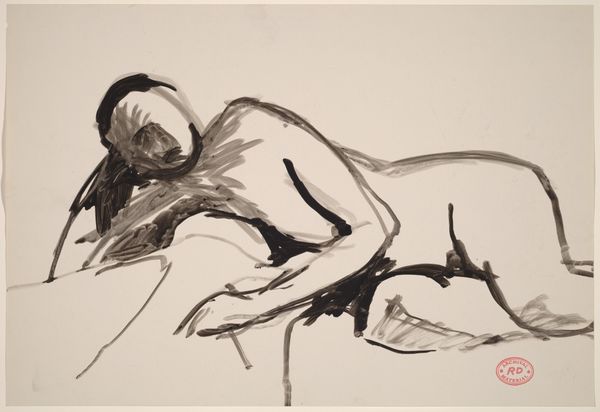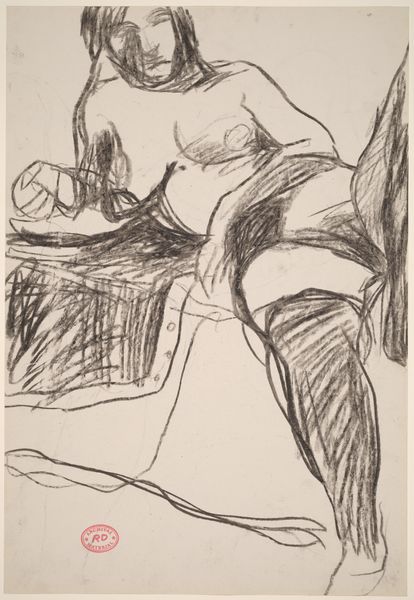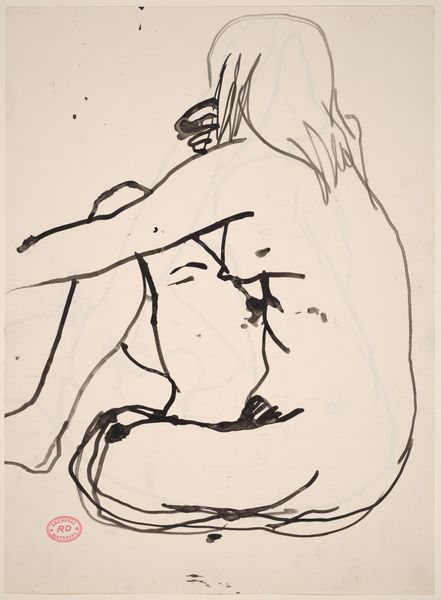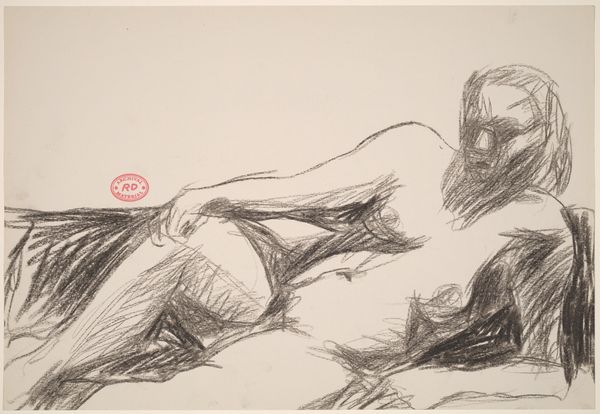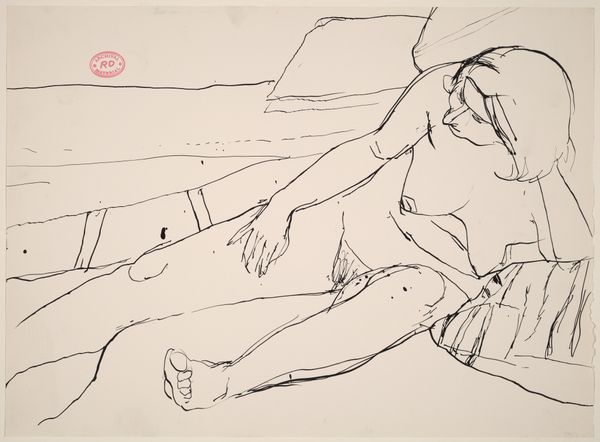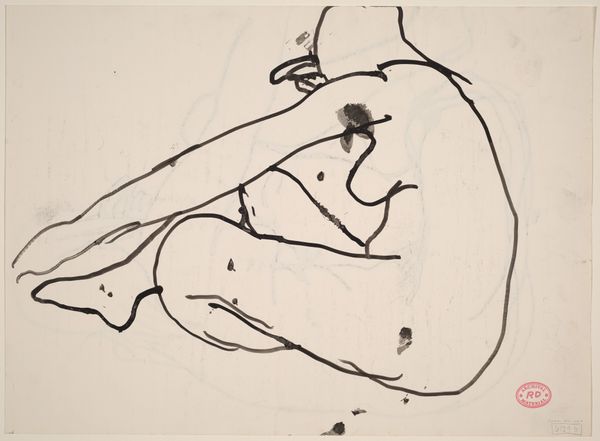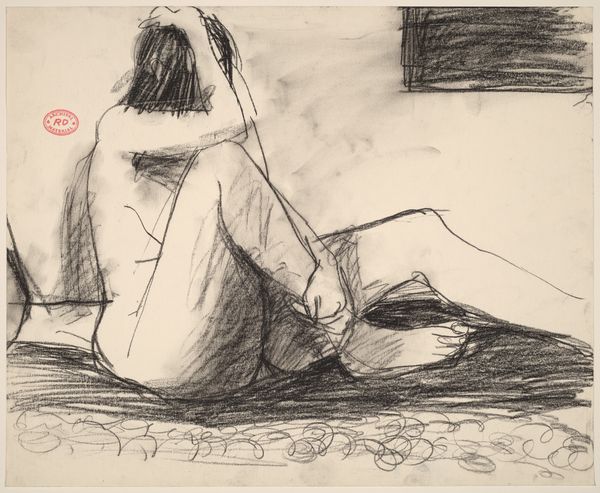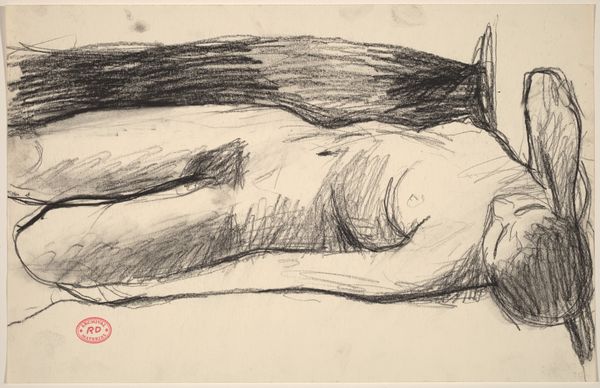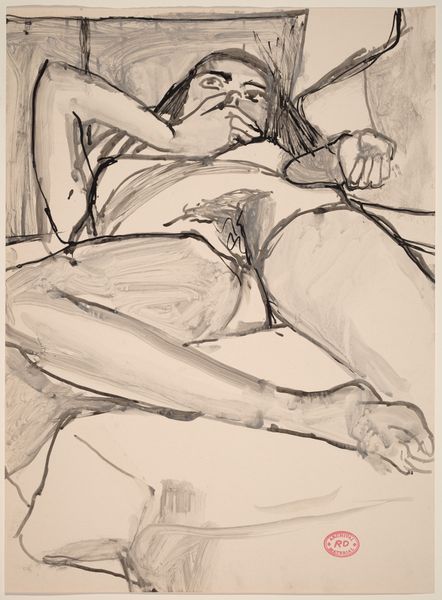![Untitled [female nude reclining on a checkered blanket] by Richard Diebenkorn](/_next/image?url=https%3A%2F%2Fd2w8kbdekdi1gv.cloudfront.net%2FeyJidWNrZXQiOiAiYXJ0ZXJhLWltYWdlcy1idWNrZXQiLCAia2V5IjogImFydHdvcmtzL2UwMWJjZTMwLTcxNTktNDUxNC05ZGNkLTZjZDA0N2QxMGZhZC9lMDFiY2UzMC03MTU5LTQ1MTQtOWRjZC02Y2QwNDdkMTBmYWRfZnVsbC5qcGciLCAiZWRpdHMiOiB7InJlc2l6ZSI6IHsid2lkdGgiOiAxOTIwLCAiaGVpZ2h0IjogMTkyMCwgImZpdCI6ICJpbnNpZGUifX19&w=3840&q=75)
Untitled [female nude reclining on a checkered blanket] 1955 - 1967
0:00
0:00
drawing
#
drawing
#
light pencil work
#
ink drawing
#
pen sketch
#
junji ito style
#
cartoon sketch
#
personal sketchbook
#
bay-area-figurative-movement
#
ink drawing experimentation
#
pen-ink sketch
#
arch
#
sketchbook drawing
#
sketchbook art
Dimensions: overall: 27.9 x 40.6 cm (11 x 16 in.)
Copyright: National Gallery of Art: CC0 1.0
Editor: Here we have Richard Diebenkorn’s "Untitled [female nude reclining on a checkered blanket]," likely created sometime between 1955 and 1967. It's a drawing with expressive, dark lines, but the perspective feels really… disjointed, almost dreamlike. What stands out to you in this piece? Curator: The disruption in perspective is fascinating. Consider the checkered blanket, an organized pattern, disrupted by the organic, fluid form of the reclining nude. The symbol of the checkered pattern, which might historically signal domesticity or order, is subverted here. Does it evoke feelings of unease? Perhaps a challenge to conventional representations of the female form within a structured environment? Editor: Unease, definitely! The heavy shading makes it feel almost claustrophobic, despite being a nude in an open space. Curator: Exactly. The artist is layering signifiers: the nude, classically associated with beauty and freedom, juxtaposed with that bold, geometric pattern and those unsettling lines. Is it possible that Diebenkorn is investigating the psychological space between freedom and confinement, desire and restriction, within the context of postwar American society? Think about the evolving roles of women during that period. Editor: That makes me think about how the blanket also flattens the image. It pushes the figure forward, removing depth and…distance. Curator: Precisely. The blanket, visually read as both supportive and constricting, operates symbolically on multiple levels. Its very presence alters how we engage with the female form. Does it not alter the feeling, the message we glean from it? Editor: I never would have considered the blanket as an active element in the composition, let alone symbolic of something beyond just… a blanket! This was a fascinating exercise. Curator: Indeed. Artworks like this challenge us to examine how symbols, context, and even disruption can construct powerful layers of meaning.
Comments
No comments
Be the first to comment and join the conversation on the ultimate creative platform.
